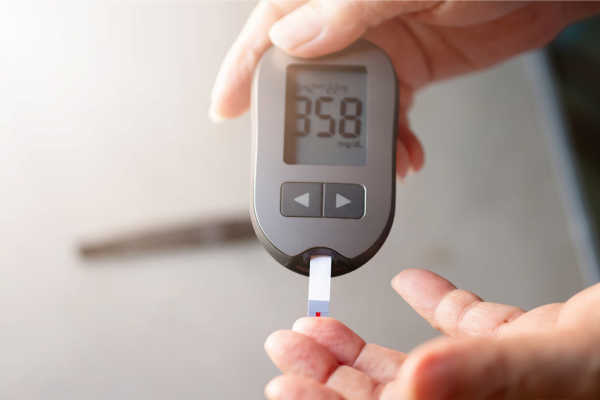Hyperglycemia, identified by high blood sugar levels, can pose serious health threats if left unchecked. Recognizing the early signs is crucial for timely intervention. This guide delves into the symptoms of hyperglycemia, highlighting the necessity for prompt medical attention and ongoing care.
Understanding Hyperglycemia
Hyperglycemia occurs when the body has difficulty regulating blood glucose. It is often associated with both type 1 and type 2 diabetes but can also result from stress, illness, or certain medications. Persistent high blood sugar levels can lead to complications affecting various body systems.
Signs and Symptoms of Hyperglycemia
- Increased Thirst and Frequent Urination: Excessive thirst (polydipsia) and frequent urination (polyuria) are early indicators, often leading to dehydration and disrupted sleep patterns.
- Fatigue and Weakness: The body’s inability to effectively utilize glucose for energy results in continuous fatigue and weakness, impacting daily activities.
- Increased Hunger (Polyphagia): Despite elevated blood sugar levels, cells may experience energy deficiency, leading to increased hunger and potential weight gain.
- Blurred Vision: High blood sugar can cause fluid imbalances in the eyes, resulting in blurred vision.
- Slow Healing of Wounds: Hyperglycemia impairs circulation and immune function, slowing the healing of even minor injuries.
- Dry Mouth and Skin: Frequent urination-induced dehydration can cause dryness of the mouth and skin, raising the risk of infections.
- Diabetic Headache and Irritability: Blood sugar fluctuations can trigger headaches and irritability of varying severity.
Glucose Management Indicator
Maintaining appropriate glucose levels is essential for overall health and preventing hyperglycemia (high blood sugar) or hypoglycemia (low blood sugar). Uncontrolled levels can lead to complications such as cardiovascular diseases, neuropathy, retinopathy, kidney diseases, and impaired wound healing.
By carefully monitoring glucose levels and implementing lifestyle changes, individuals can reduce diabetes-related complications and elevate their quality of life. This includes a balanced diet, regular physical activity, effective stress management, adherence to medications, and periodic check-ups with healthcare professionals.
Blood Sugar Levels Chart by Age
Blood sugar levels vary among individuals, but general guidelines exist for healthy levels based on age. These ranges may vary slightly depending on health conditions and whether measurements are pre- or post-meal.
Here’s a common blood sugar levels chart by age:
- Children and Adolescents (ages 0-18)
- Fasting Blood Sugar (FBG): 70-100 mg/dL (3.9-5.6 mmol/L)
- Postprandial Blood Sugar (PPBG) after meals: Less than 140 mg/dL (7.8 mmol/L)
- Adults (ages 18-60)
- Fasting Blood Sugar (FBG): 70-100 mg/dL (3.9-5.6 mmol/L)
- Postprandial Blood Sugar (PPBG) after meals: Less than 140 mg/dL (7.8 mmol/L)
- Older Adults (ages 60 and above)
- Fasting Blood Sugar (FBG): 70-100 mg/dL (3.9-5.6 mmol/L)
- Postprandial Blood Sugar (PPBG) after meals: Less than 140 mg/dL (7.8 mmol/L)
These guidelines are generalized, and individual variations can occur. People with diabetes or other health conditions should follow the specific target ranges set by their healthcare provider.
Herbs That Lower Blood Sugar Fast
Several herbs have been traditionally used to lower blood sugar levels. Herbs like cinnamon, fenugreek, ginseng, gymnema sylvestre, bitter melon, berberine, aloe vera, and turmeric contain compounds that mimic insulin, enhance glucose uptake, and reduce glucose production in the liver.
Incorporating these herbs into your diet or as supplements can aid in managing blood sugar levels. However, it’s crucial to consult a healthcare professional before using them, especially for individuals with diabetes or those on medications. Regular blood sugar monitoring and medical guidance are imperative for effective management.
Takeaways
Recognizing symptoms of hyperglycemia is essential for early intervention. If you or someone you know shows these signs, particularly if they have risk factors like diabetes or medication use, seek medical advice promptly. Early detection and management are crucial for preventing complications and enhancing health.
Frequently Asked Questions (FAQs)
Why is my blood sugar high when I have not eaten anything?
Blood sugar levels can rise without food intake due to factors such as stress, illness, medications, or the dawn phenomenon, where early morning hormones elevate blood sugar levels.
Does sugar raise blood pressure?
While sugar doesn’t directly raise blood pressure, excessive consumption can lead to weight gain and obesity, which are risk factors for high blood pressure.
How long does blood sugar stay elevated after eating?
Blood sugar levels typically peak 1 to 2 hours post-meal and return to baseline within 3 to 4 hours. This varies based on meal composition, metabolism, and other factors.
What blood sugar level requires insulin?
The need for insulin depends on various factors, including diabetes type and severity, overall health status, and the treatment plan in place. Insulin is generally required when blood sugar levels remain high despite lifestyle changes and oral medications.
Is feeling sick after eating sugar a sign of diabetes?
Feeling sick after consuming sugar can indicate several conditions, including diabetes, but it is not a definitive sign. Symptoms like increased thirst, frequent urination, fatigue, and unexplained weight loss are more indicative of diabetes.
Can high blood sugar cause headaches?
Yes, high blood sugar can cause headaches. Fluctuations in blood sugar can affect blood vessels and brain neurotransmitters, leading to headaches or migraines.
Is a blood sugar level of 170 dangerous?
A blood sugar level of 170 mg/dL indicates hyperglycemia. While not immediately dangerous, prolonged high levels can lead to complications. Regular monitoring and consultation with a healthcare professional are fundamental for appropriate management.
